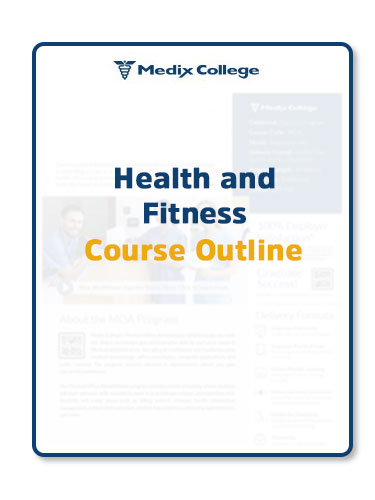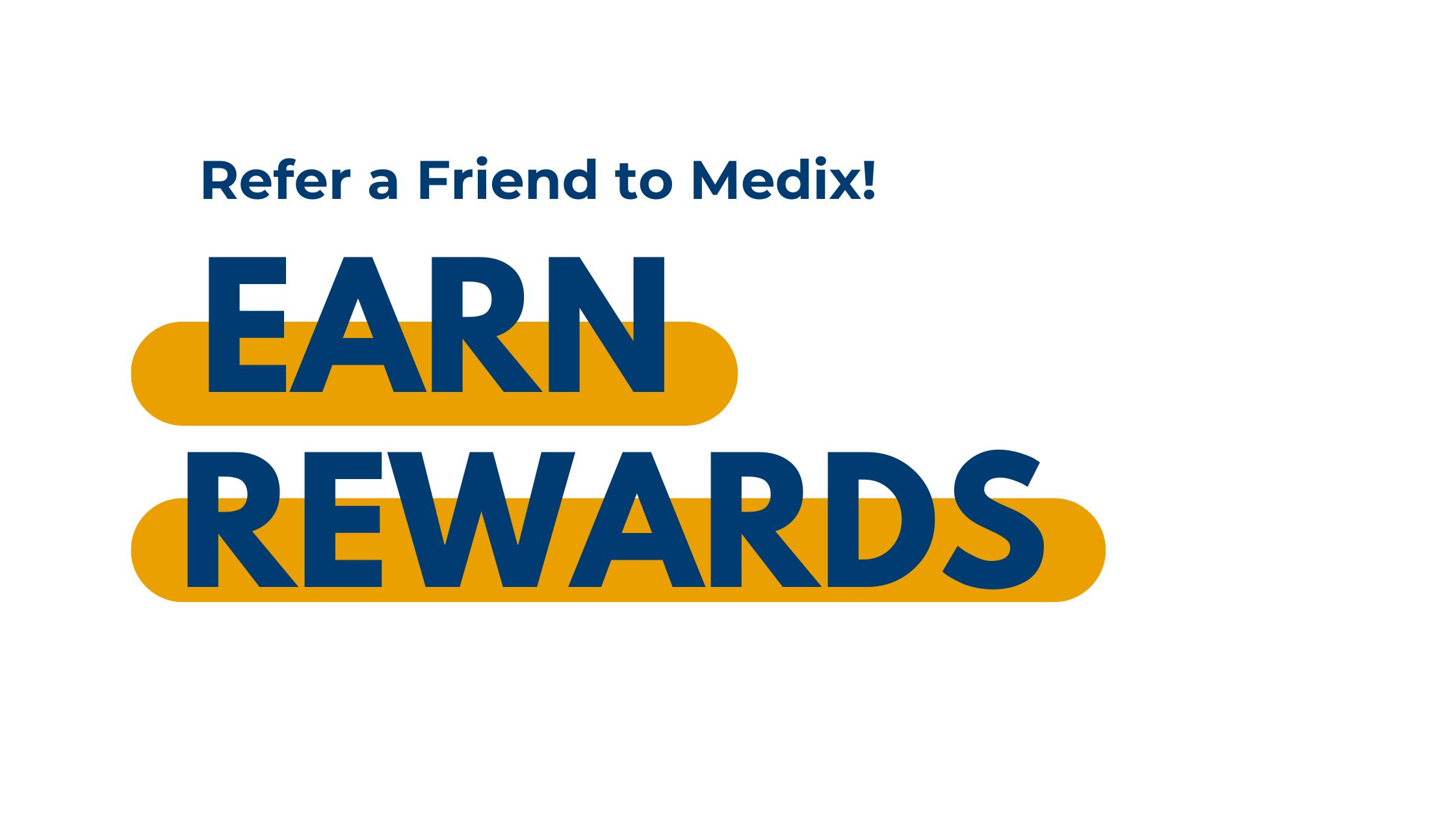Health and Fitness Certificate Program
![]()
Your career as a wellness professional is just 21 weeks away!
At Medix College, we’re committed to developing the next generation of health and fitness professionals. Our Health & Fitness Certificate program equips you with essential skills and knowledge, including nutrition, anatomy, exercise prescription, biomechanics, and fitness assessment. Achieve your canfitpro certification—the gold standard in personal training and fitness education in Canada—while gaining expertise in motivational techniques, business management, and more.
Our mission is to prepare you as a highly qualified, advanced-level Certified Personal Trainer and Health Coach. With access to the latest research and online resources, the Medix College Health & Fitness Certificate provides a comprehensive foundation for a successful and rewarding career in wellness.

Program Details
![]()
The 21-week Health and Fitness Certificate is for people looking to pursue a career as fitness and health practitioner. This comprehensive program covers essential components to prepare you to make a significant impact in the field:
- Anatomy and Physiology: Gain a thorough understanding of the anatomy and physiology of all body systems, forming a solid foundation for informed health and fitness practice.
- Personalized Exercise Programs: Acquire the skills to design personalized exercise programs tailored to individual needs, considering fitness levels, aspirations, and health considerations.
- Fitness Assessments: Master advanced techniques for conducting comprehensive fitness assessments, utilizing diverse tools to precisely evaluate and measure clients’ fitness levels.
- Motivational Strategies: Develop a nuanced understanding of motivational strategies to inspire and guide clients on a transformative fitness journey, fostering long-term commitment to a healthy lifestyle.
- Business Management: Gain practical skills in business management to prepare you for potential entrepreneurial ventures and enhance your ability to thrive in the competitive health and fitness industry.
- Biomechanics: Understand the principles of biomechanics to apply knowledge of movement and mechanics, optimizing exercise efficiency and minimizing the risk of injuries.
- Nutrition: Explore the critical role of nutrition in overall health and fitness, equipping you to provide clients with sound nutritional advice.
Hands-On Learning: Your 1-Month Externship
As a key component of the program, the 1-month externship offers valuable hands-on experience with one of our partner gyms. Under the guidance of an experienced Medix Health and Fitness Instructor, you’ll engage in practical activities including fitness assessments, exercise prescriptions, and program design. This immersive experience ensures you gain the confidence to positively impact the health and well-being of your future clients.
Personal and Professional Growth
At Medix, we go beyond practical skills. Our programs are designed to help you grow personally and professionally with unique modules on mindset development and financial literacy:
Thought Patterns for High Performance®
Mindsetting for Success and Well-being in the Digital Age™ from The Pacific Institute
Learn how to overcome limiting beliefs, habits, and attitudes through proven techniques that promote a growth mindset. You’ll gain tools to boost your well-being, educational success, and career achievement.
Enriched Academy
This personal finance tool equips you with the knowledge to manage your money and build a strong financial future, ensuring you’re prepared for all aspects of life after graduation.
Download Course Outline
![]()
Begin your educational journey with Medix College by exploring our comprehensive Health and Fitness program.
Download the course outline to discover detailed course content and curriculum information.
Take the first step towards a rewarding career in healthcare!

Admissions Requirements
![]()
For admissions to Medix College, Canadian students must:
- Interview with an admissions advisor
- Provide proof of Gr. 12 OSSD or Mature Student Status
- Complete an application for admission
- Take an entrance evaluation
Program Costs

Financial assistance may be available to those who qualify. To find out what you’re eligible for, contact our amazing admissions team to review your options today!
Total Program Fees
Admissions Registration Fee: $50 *
Tuition: $4,600
Lab Fees: $1,050.00
Books: $400.00
Uniform: $150.00
Total: $6,200.00
*Applied to tuition upon enrollment.
Career Options for Health & Fitness Students
![]()
As a Medix College Health & Fitness Certificate student, you gain access to our job placement assistance services. Our dedicated team provides support in building standout resumes and cover letters, refining interview skills, and developing effective job search strategies. You can also attend specialized workshops, including those in partnership with community partners, covering topics such as Customer Service Excellence and LinkedIn profile development. Our goal is to equip you with the tools and knowledge to secure rewarding positions in the Toronto area and beyond. Your success is our priority at Medix College.
Graduates of the Health & Fitness Certificate program are well-prepared for various roles in the health and fitness industry, including:
- Fitness Instructor
- Personal Training Specialist
- Fitness Program Organizer
- Nutrition Coach
- Recreational Facility Coordinator
These roles offer diverse opportunities to apply your skills and make a positive impact in the field of health and fitness.
Our Graduates Have Been Hired At
- Commercial fitness facilities
- YMCA/YWCA
- Recreational facilities
- University and college recreational departments
- Public health departments
- and more!
Salary
![]()
$18
AVERAGE WAGE/HR*
$32
HIGH WAGE/HR*
Source: Job Bank
*Wage data rounded down to the nearest dollar. Average wage represents the middle value between lowest to highest wages. Local income may vary.




